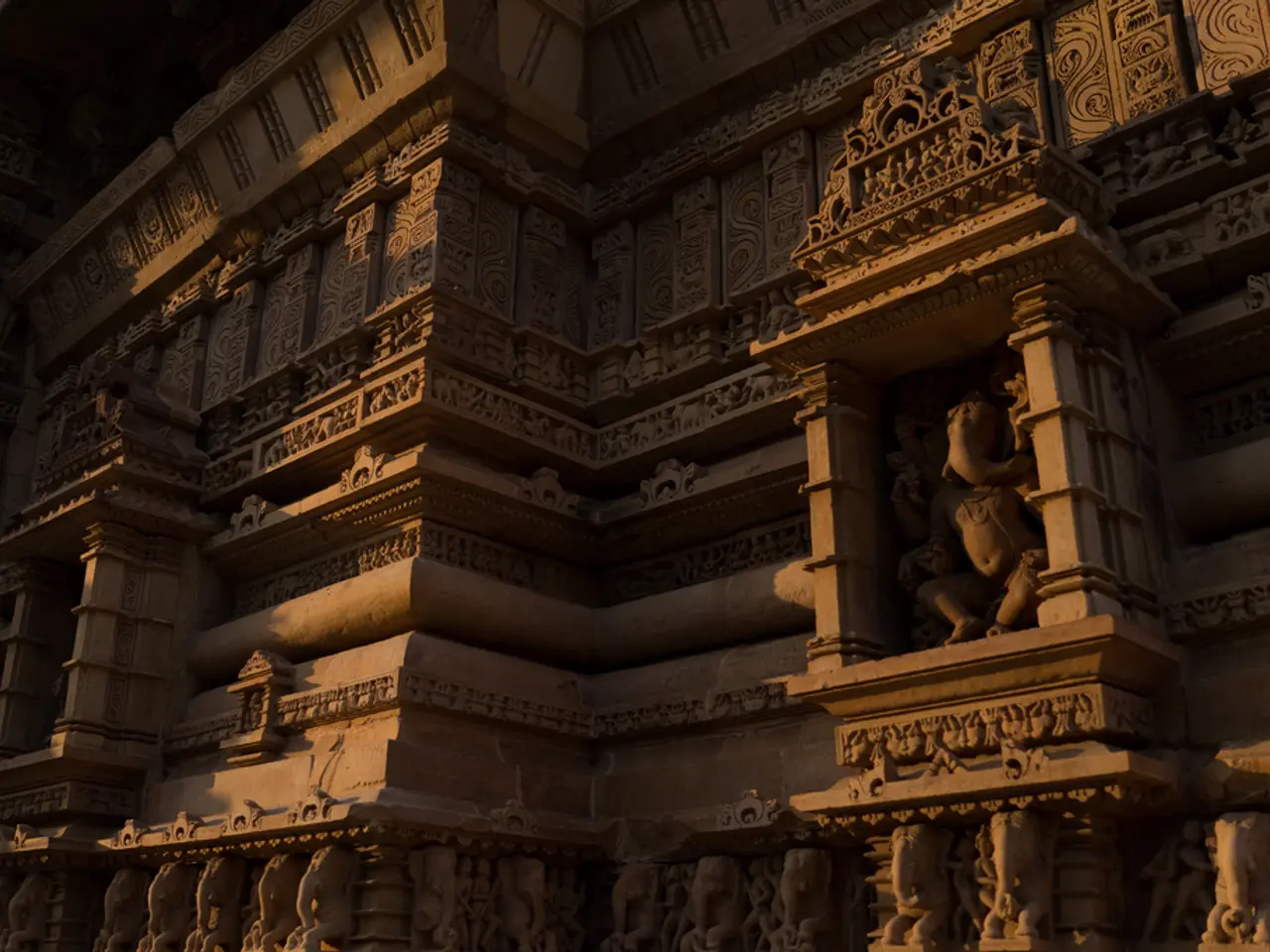Unveiling the visage of an ancient Egyptian priestess, minus intrusion into her sarcophagus.
In a remarkable feat of modern technology and artistic skill, Brazilian artist and scientist Cicero Moraes has recreated the face of an ancient Egyptian mummy named Meresamun. This mummy, who lived around 800 BC and was a member of the Thebian elite, was a singer inside the Temple of Amun in Karnak near Luxor, and her name means "Amun Loves Her".
The process began with high-resolution CT scans of Meresamun's remains, which were made publicly available by the University of Chicago in 2012. Moraes, based in the town of Sinop in Brazil, used these scans to create a 3D model of Meresamun's face, complete with markers for the thickness of soft tissue, the profile of the nose, and a deformity near the jaw.
Moraes's technique combines his expertise in graphic design, anatomy, and forensic science with digital 3D modeling software. The method is non-invasive, preserving the original remains, and allows an artistic yet scientifically informed recreation of historical faces.
The process begins with obtaining 3D computer-generated skull scans, often from CT imaging, which provide precise anatomical data without disturbing mummies or remains. On these digital skull models, Moraes applies markers indicating soft tissue thickness and facial features to guide the facial approximation. Using this skeletal and anatomical framework, he performs digital sculpting to build the soft tissue, muscles, and skin layers, effectively reconstructing a lifelike face.
For Meresamun, the CT scan of her unopened sarcophagus at the Ashmolean Museum allowed Moraes to map out her skull digitally, then use facial approximation guided by tissue depth markers to rebuild her face precisely, even marking specific deformities near the jaw to maintain accuracy.
Moraes's work on Meresamun is just one example of his extensive portfolio. He has also recreated the faces of historical figures such as Beethoven, Mozart, Dante, Tutankhamun, Anthony of Padua, and Rose of Lima. His career highlight was creating a prosthetic shell for a turtle who lost hers in a fire in 2016.
Moraes started doing facial reconstructions as a hobby after experiencing symptoms of post-traumatic stress disorder following an armed robbery. He has completed over 150 facial reconstructions and claims he has no favorites. The reconstruction of Meresamun's face took two weeks of full-time work.
The final reconstruction of Meresamun's face is described as serene, conveying dignity and subtlety. Moraes was captivated by Meresamun's life and the fact that the data from the CT scans had been put in the public domain for other researchers to use.
Moraes's technique has also been applied beyond archaeology to create prosthetics and aid police investigations as well. He has developed software for facial reconstructions, which he distributes for free, and has also worked on surgical planning tools, which are used by surgeons in 33 countries. The technology used in Moraes's work has improved significantly, with specialized algorithms, increased computer power, and robust anatomical libraries.
Interestingly, the method has also been used for prosthetic toucan, goose, parrot, and macaw beaks. Moraes's work continues to push the boundaries of what is possible with technology and art, bringing history to life in a way that was previously unimaginable.
- Moraes, based on the CT scans of Meresamun's remains made public by the University of Chicago, has used digital 3D modeling software to recreate not only the face of the ancient Egyptian mummy but also the thickness of her soft tissue, the profile of her nose, and a deformity near her jaw, showcasing the application of technology in art and science.
- Beyond historical figures, Moraes's work extends to modern technology, as he has developed software for facial reconstructions, which he distributes for free, and has worked on surgical planning tools, utilized by surgeons in 33 countries, demonstrating the versatility of his technique in various fields, including health-and-wellness and fitness-and-exercise.
- Furthermore, Moraes's artistic efforts are not confined to humans; he has also created prosthetic shells for animals, such as the turtle that lost hers in a fire, showcasing his compassion for both science and the wellbeing of creatures.
- In the realm of artificial intelligence, Moraes's work has also branched out to create digital facsimiles of various bird species, including toucans, geese, parrots, and macaws, demonstrating the potential of AI in expanding our understanding and appreciation of the natural world.
- Moraes's remarkable achievements in the fusion of technology, art, and science have garnered media attention, with news outlets frequently featuring stories of his artistic recreations, from Egypt's Meresamun to Latin America's Rose of Lima, thereby popularizing the field of facial reconstruction and highlighting its significance in the preservation of history.




